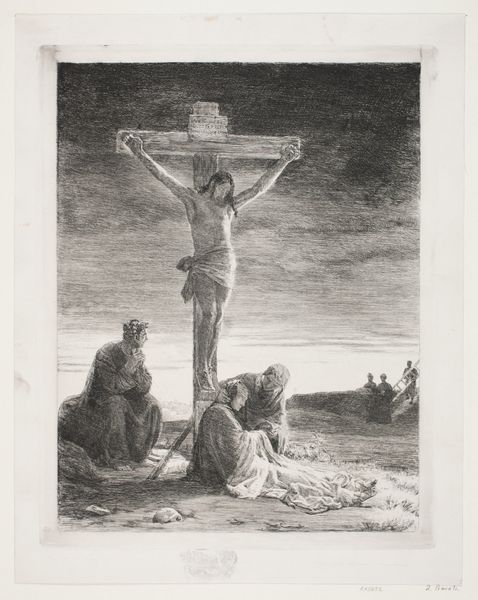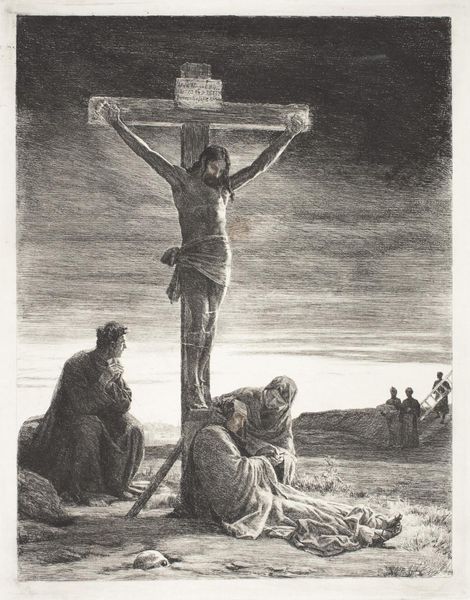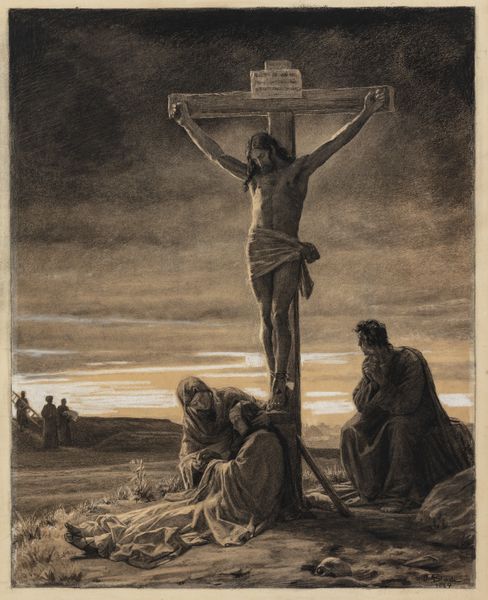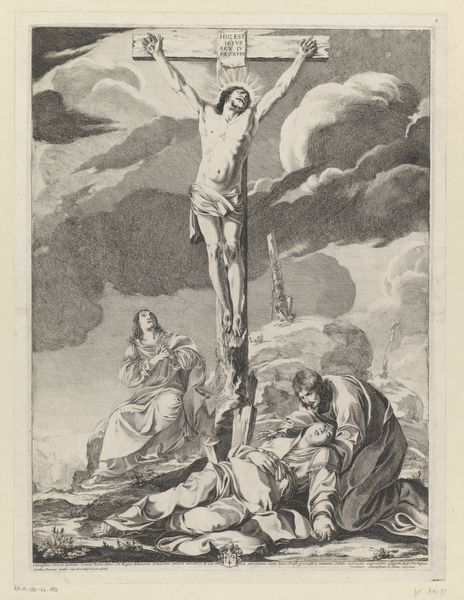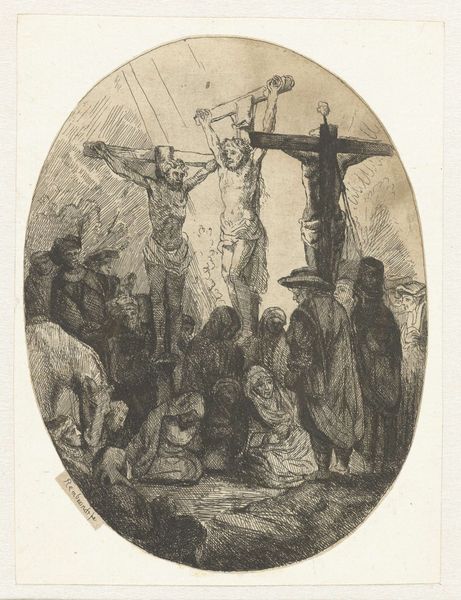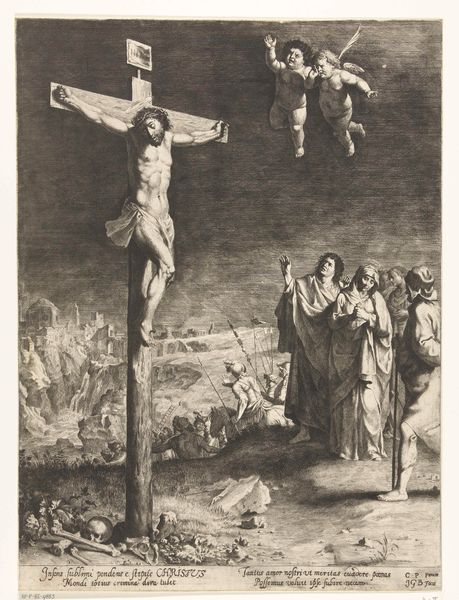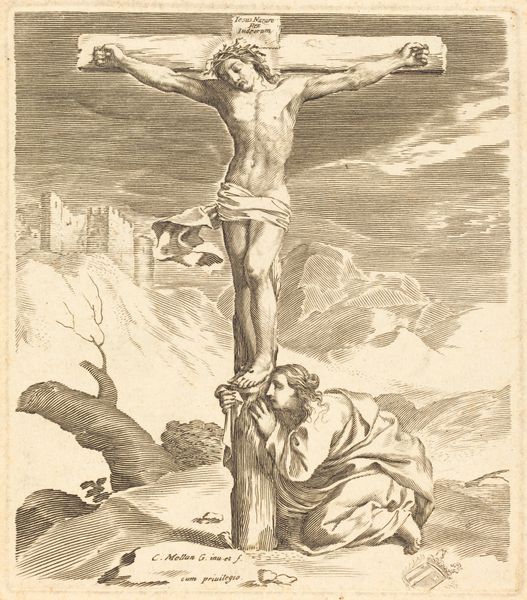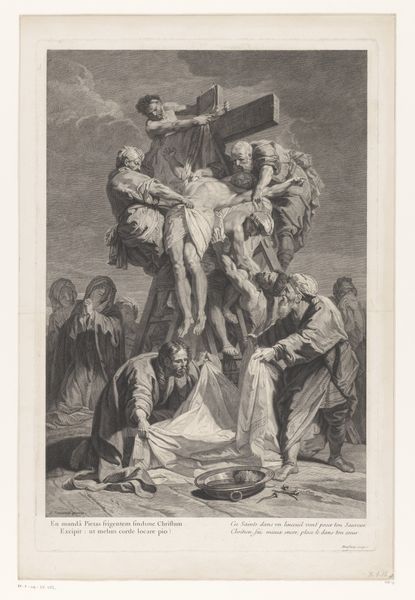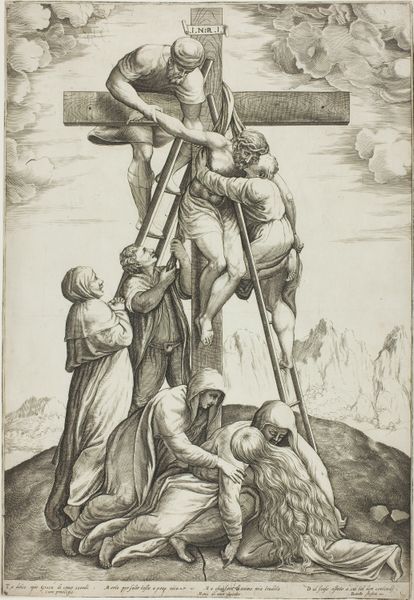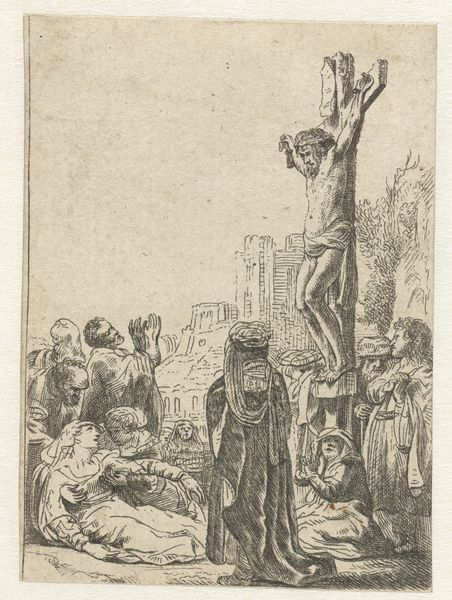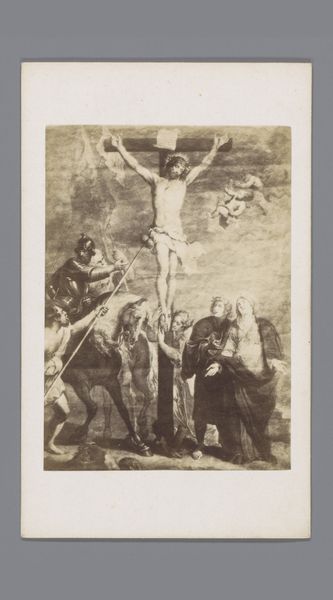
print, etching
#
portrait
#
narrative-art
# print
#
etching
#
charcoal drawing
#
history-painting
#
academic-art
#
realism
Dimensions: 367 mm (height) x 293 mm (width) (bladmaal), 335 mm (height) x 268 mm (width) (plademaal)
Curator: This etching from 1884, "Kristus på korset", or "Christ on the Cross," is by the Danish artist Carl Bloch. Editor: It’s remarkably bleak, isn’t it? Even for a crucifixion scene. The scratchy etching technique amplifies the agony, I think, and the desolate landscape adds to the profound sense of abandonment. Curator: Indeed. Bloch was working within the conventions of academic art and realism at the time, and this piece engages with history-painting by tackling a deeply significant moment in Christian history. It reflects a specific interest in printmaking that blossomed across Europe. Do you think it comments on wider institutions? Editor: Absolutely. Look at the strategic distribution. Etchings are reproducible. While he was a celebrated painter achieving commissions from the Danish royal family, the relatively accessible nature of this work brings up ideas around democratization, and perhaps the rise of more individualized forms of worship in response to traditional religious institutions? Curator: That's a great point. And we also have to consider the economics of printmaking at the time; an artist might choose the medium in an attempt to more broadly disseminate their work. How do you view this in terms of his practice, overall? Editor: Bloch was hugely successful in his lifetime, gaining significant commissions from religious institutions, too, and in many ways was quite conservative. It does come across as though the use of print was as a way to grapple with quite a popular trope – but what really sets it apart from paintings of a similar scene is his attention to those gathered around, suggesting quite a modern interpretation that favors shared sorrow over lone suffering. Curator: Considering how deeply faith was woven into the fabric of the societies in which these images circulated, one must acknowledge that access and the means of distribution were vital. Editor: Absolutely. The scale allows for a more personal engagement. One can consider this to be almost like owning an artefact steeped in historical events without commissioning an entire piece themselves. A slice of the passion. Curator: Thank you. Editor: Thank you. It has really sparked my thinking on how artworks like these affect the public sphere and challenge prevailing norms!
Comments
No comments
Be the first to comment and join the conversation on the ultimate creative platform.
